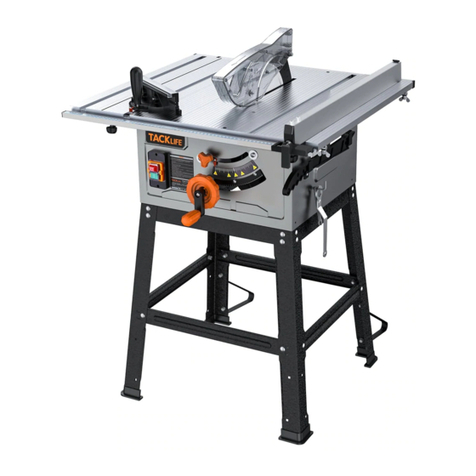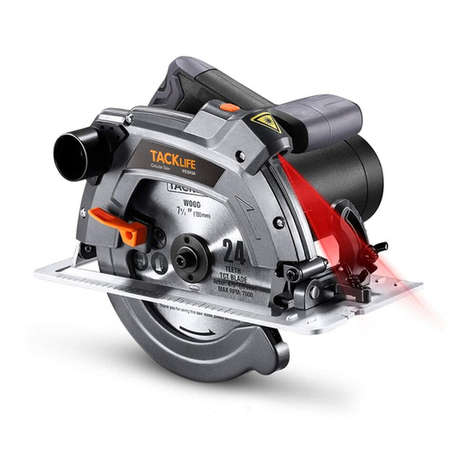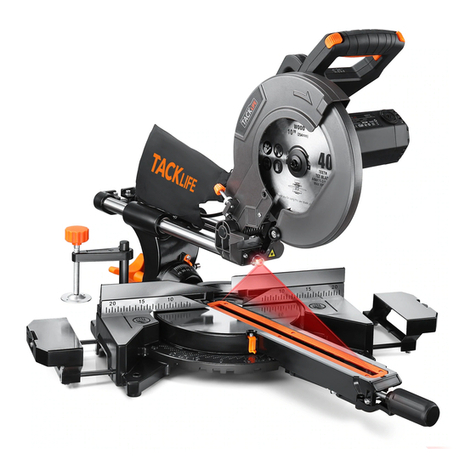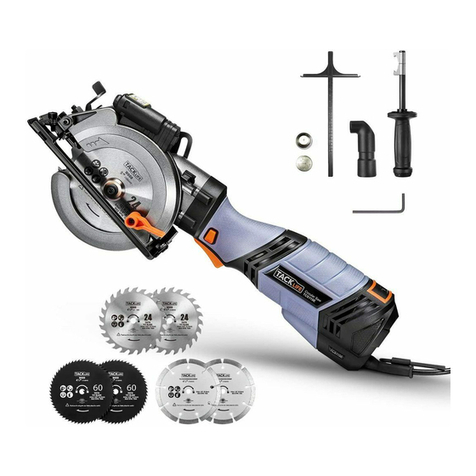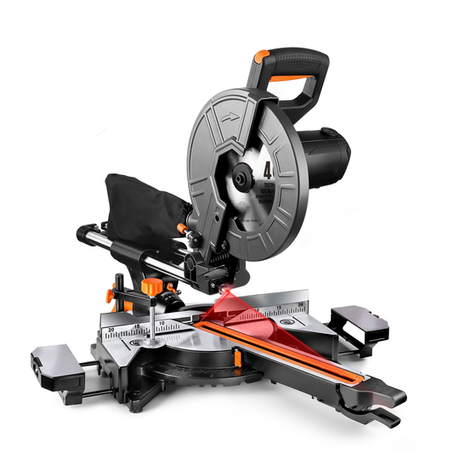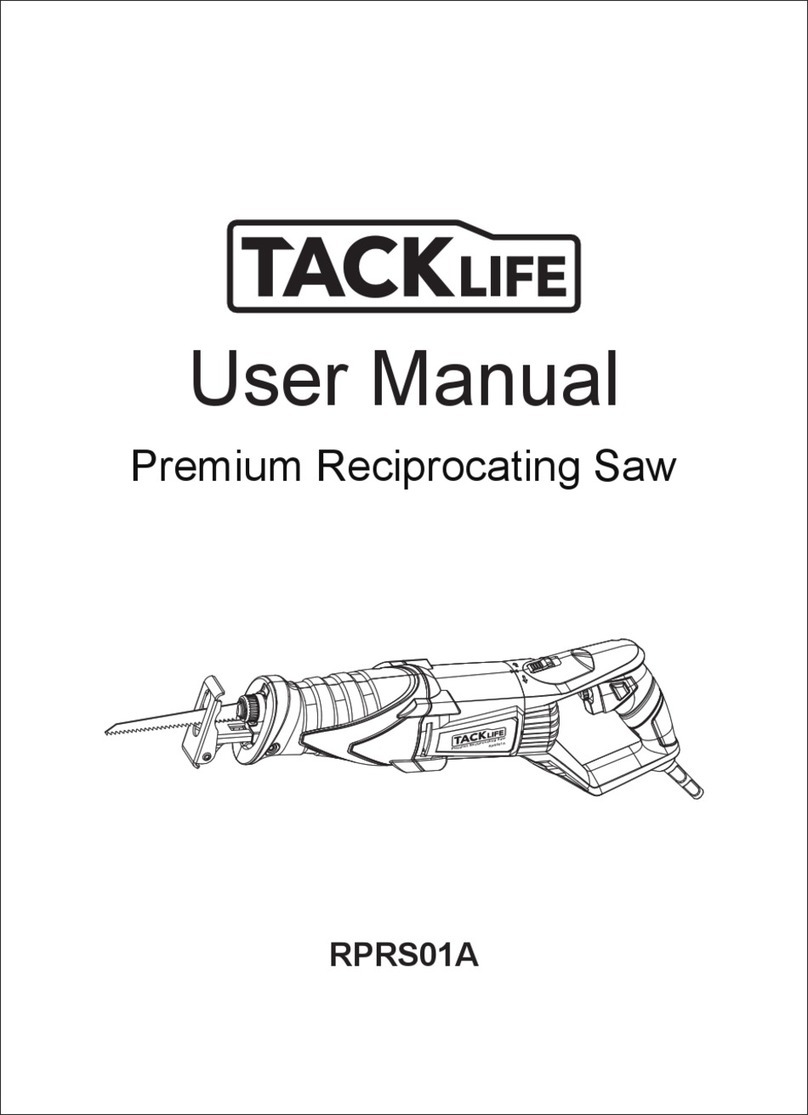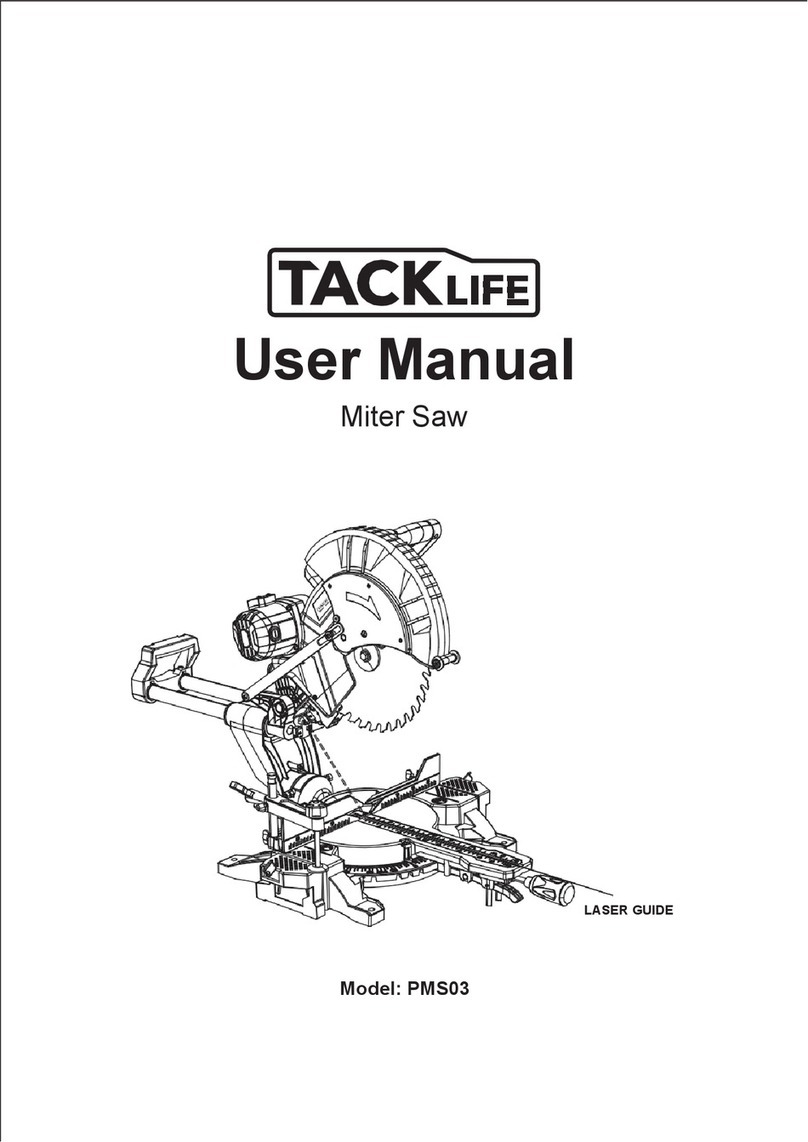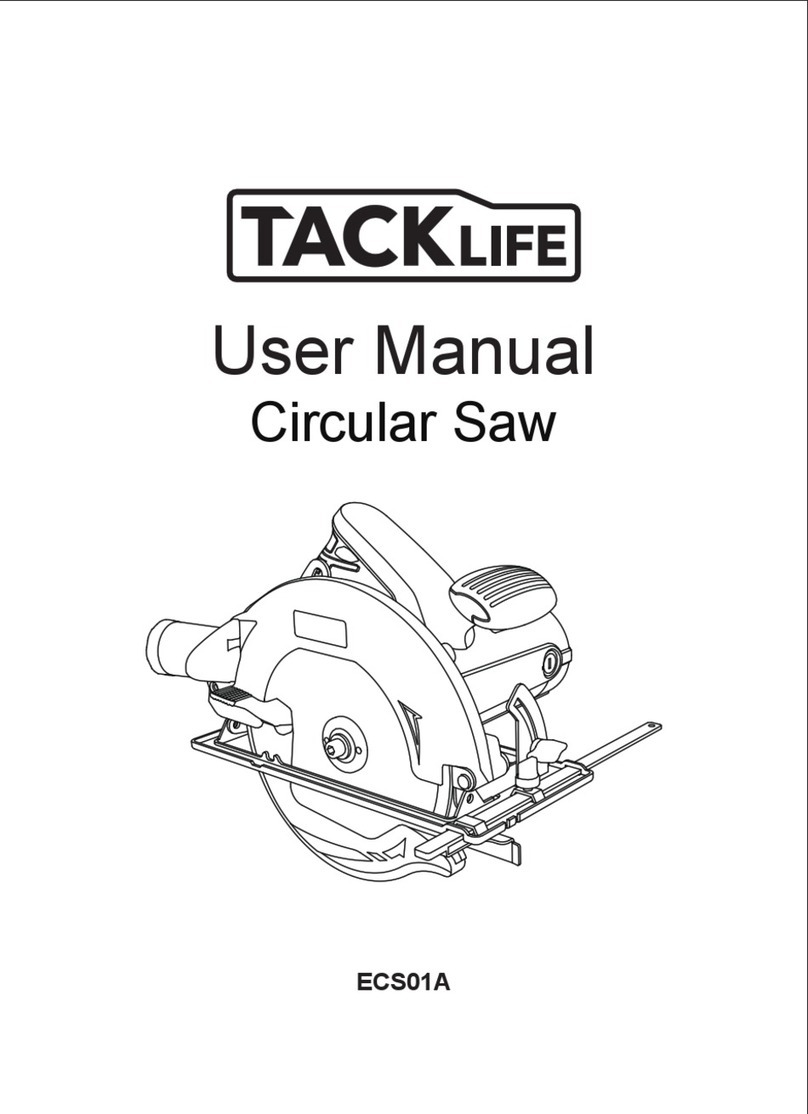
16. Always remove keys and wrenches after use
-Always check that keys, wrenches and other adjusting tools have been removed before you switch on
the equipment.
17. Avoid unintentional starting
-Make sure that the switch is turned off when connecting the tool to the power supply.
18. Use extension cables for outdoors
-Check that it is approved for outdoor duty and is marked accordingly.
19. Be alert at all times
-Watch what you are doing. Use common sense when working. Never use the tool when you are
distracted.
20. Check the electric tool for potential damage
-Protective devices or other parts with minor damage must be carefully inspected to ensure that they
function correctly and as intended prior to continued use of the electric tool.
-Check whether the moving parts function faultlessly and do not jam or whether parts are damaged. All
parts must be correctly mounted and all conditions must be fulfilled to ensure fault-free operation of
the electric tool.
-Damaged protective devices and parts must be properly repaired or replaced by a recognised
specialist workshop, insofar as nothing different is specified in the user manual.
-Damaged switches have to be replaced by a customer service workshop.
-Do not use any electric tool on which the switch cannot be switched on and off.
21. ATTENTION
-The use of other insertion tools and other accessories can entail a danger of injury.
22. Have your electric tool repaired by a qualified electrician
-This electric tool conforms to the applicable safety regulations. Repairs may only be performed by an
electrician using original spare parts. Otherwise accidents can occur.
-
WARNING
This electric tool generates an electromagnetic field during operation. This field can impair active or passive medical
implants under certain conditions. In order to prevent the risk of serious or deadly injuries, we recommend that persons
with medical implants consult with their physician and the manufacturer of the medical implant prior to operating the
electric tool.
5.2 Additional safety instructions
Switch the machine off immediately and pull the power plug in an emergency.
Follow all these safety instructions before and while working with the saw.
Do not use this saw to cut fire wood.
Do not use this saw to cross-cut round wood without a suit- able holding device.
The machine is equipped with a safety switch to prevent it from being switched on again accidentally after a
power failure.
If you need to use an extension cable, make sure its conductor cross-section is big enough for the saw’s power
consumption. Minimum cross-section 1,5 mm2.
If you use a cable reel, the complete cable must be pulled off the reel.
Persons working on the machine should not be distracted.
After you have switched off the motor, never slow down the saw blade by applying pressure to its side.
Only fit blades which are well sharpened and have no cracks or deformations.
Faulty saw blades must be replaced immediately.
Never use saw blades which do not comply with the data specified in this manual.
It is imperative to make sure that all devices which cover the saw blade are in good working order.
Never dismantle the machine’s safety devices or render them inoperative.
Damaged or faulty safety devices have to be replaced immediately.
Never cut workpieces which are too small to hold securely in your hand.
Never load the machine so much that it cuts out.
